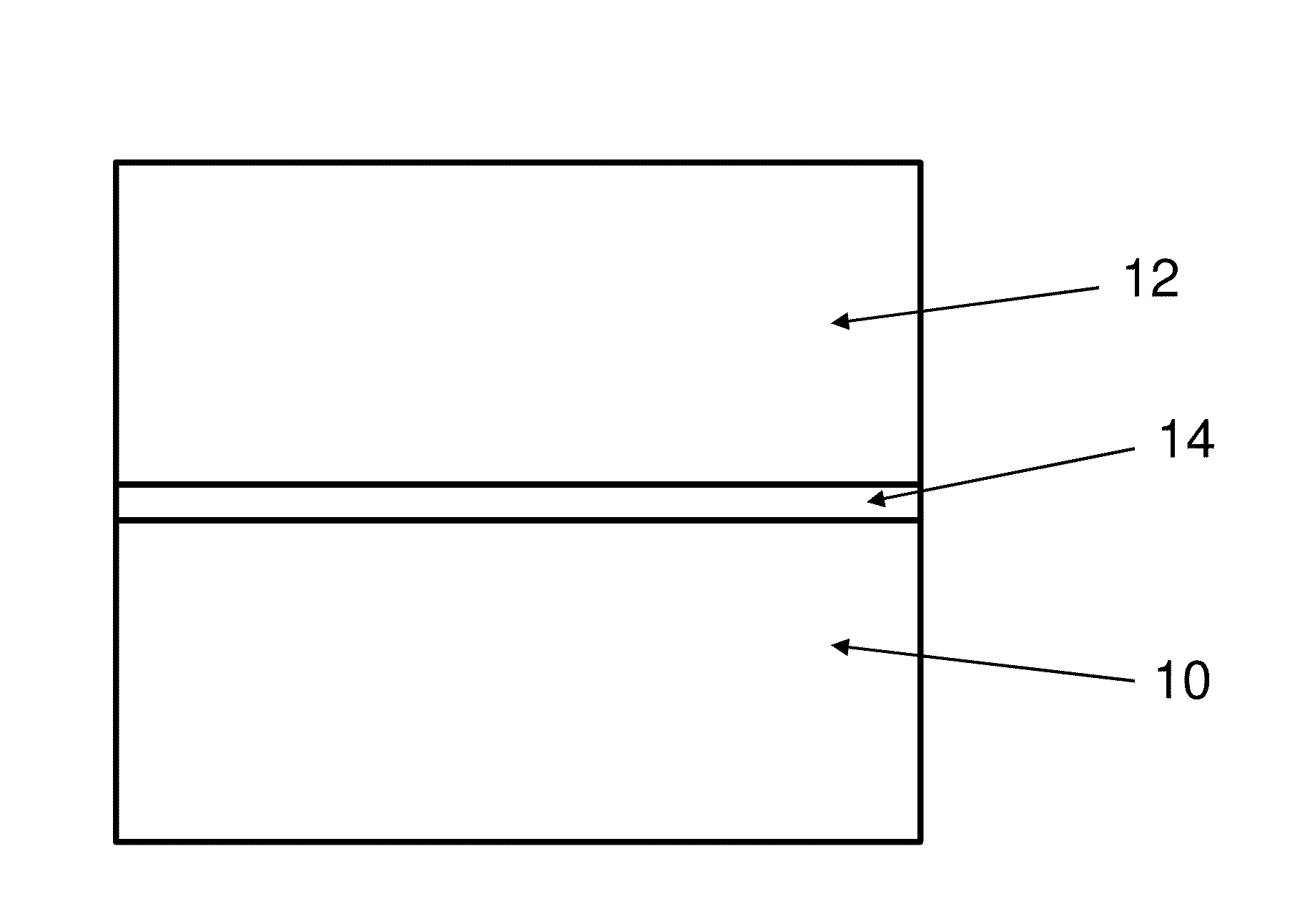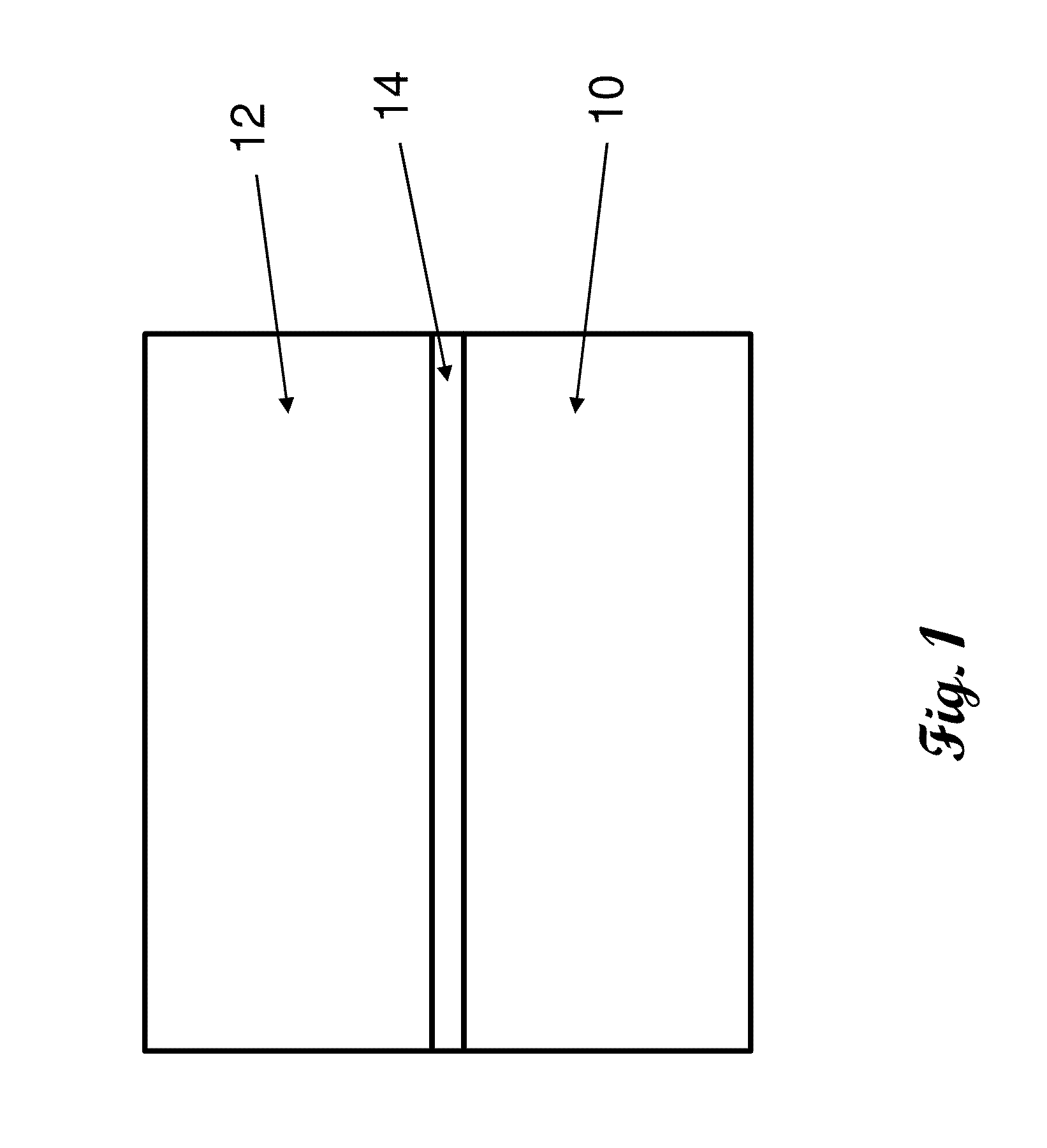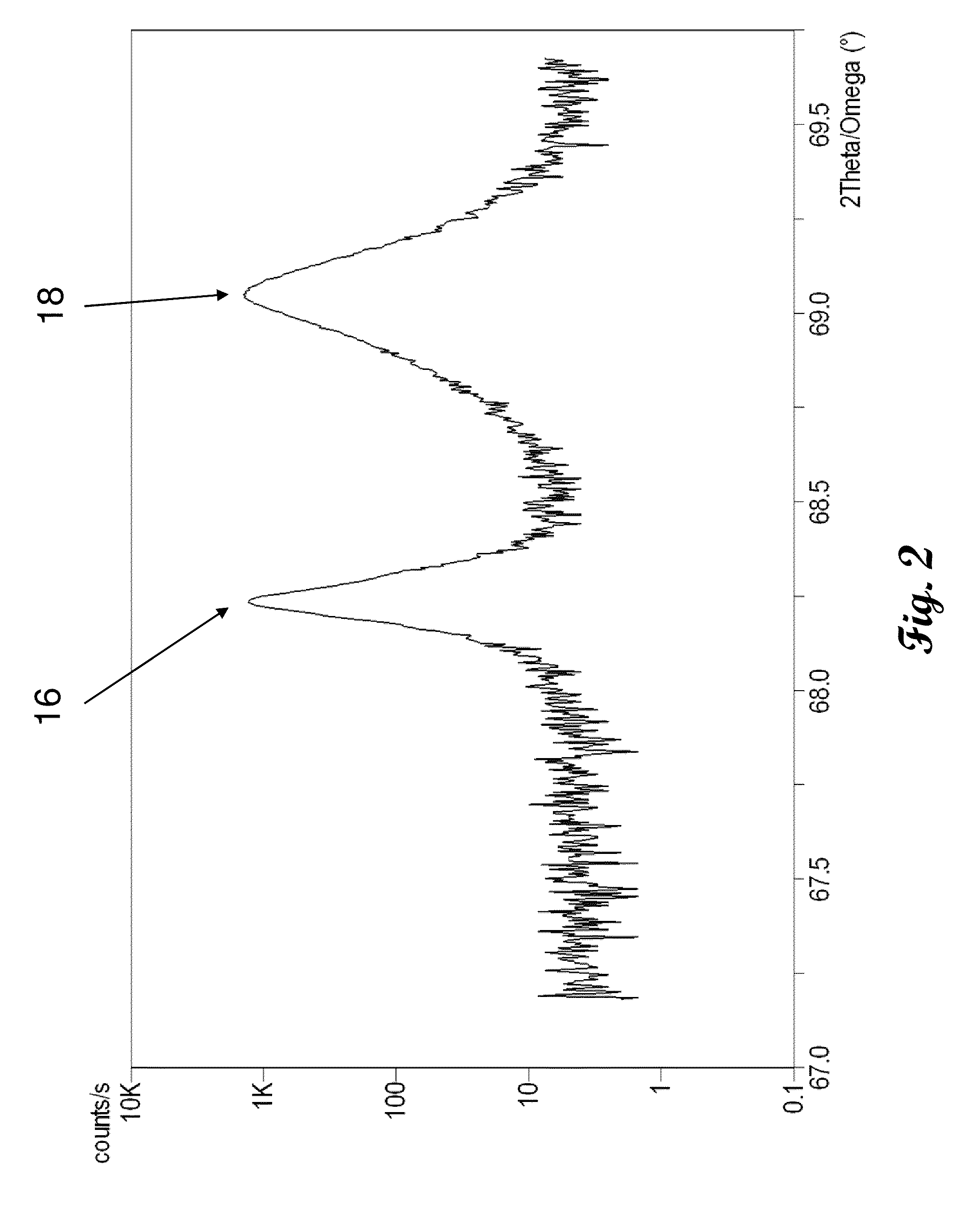Method of Group III Metal - Nitride Material Growth Using Metal Organic Vapor Phase Epitaxy
- Summary
- Abstract
- Description
- Claims
- Application Information
AI Technical Summary
Benefits of technology
Problems solved by technology
Method used
Image
Examples
Embodiment Construction
E technique over the m-plane sapphire substrate.
[0034]FIG. 5 shows yet another lower-resolution DIC Microscopy image of the surface of semi-polar GaN deposited using conventional MOVPE technique over the m-plane sapphire substrate.
[0035]FIG. 6 shows a lower-resolution DIC Microscopy image of the surface of semi-polar GaN deposited using the technique of the present invention over the m-plane sapphire substrate.
[0036]FIG. 7 presents the Transmission Electron Microscopy (TEM) high resolution image of the Substrate / Seed Layer / GaN layer deposited using the technique of the present invention.
[0037]FIG. 8 provides the insight to the face type validation of the grown GaN film by the method of Convergent Beam Electron Diffraction (CBED).
[0038]It is noted that FIG. 1 of the drawings accompanying the invention description is not to scale. The drawings are intended to depict only typical aspects of the invention, and therefore should not be considered as limiting the scope of the invention.
DET...
PUM
| Property | Measurement | Unit |
|---|---|---|
| Polarity | aaaaa | aaaaa |
| Flexibility | aaaaa | aaaaa |
| Stress optical coefficient | aaaaa | aaaaa |
Abstract
Description
Claims
Application Information
 Login to View More
Login to View More - R&D
- Intellectual Property
- Life Sciences
- Materials
- Tech Scout
- Unparalleled Data Quality
- Higher Quality Content
- 60% Fewer Hallucinations
Browse by: Latest US Patents, China's latest patents, Technical Efficacy Thesaurus, Application Domain, Technology Topic, Popular Technical Reports.
© 2025 PatSnap. All rights reserved.Legal|Privacy policy|Modern Slavery Act Transparency Statement|Sitemap|About US| Contact US: help@patsnap.com



